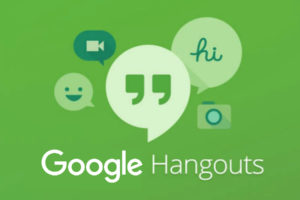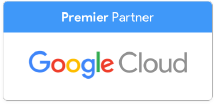Google announced an update in its Hangouts consolidation process for all G Suite customers earlier this year and the first key date for admins making changes is next week.
The Hangouts consolidation was originally announced two years ago, but up until this point, Hangouts was still, well, hanging out. A lot of consumers are confused if for no other reason than the impending removal of Hangouts has been pushed to the back of everyone’s mind in favor of more pressing concerns.
Now that the deconstruction of Hangouts is coming up quick, the details seem to be hitting all at once. If you’re having trouble, you’re not alone. Here’s a quick and simplified overview of what’s happening to Hangouts.
What’s in a Name?
Essentially, the primary functions of Hangouts--chat and video chat--have been delegated into two updated apps, both designed to integrate seamlessly into G Suite’s user experience. Think of it as two Russian nesting dolls of business collaboration.
This is consistent with Google’s reputation for combining form and function so that you don’t have to scramble between several different applications. So, worry not, Google is keeping everything simple. At the most basic level, they’re doing what they usually do--combining intuitive, collaborative tools--and dressing it up with new names and a sleeker interface.
Let’s go over the two replacements for Hangouts and then cover the rollout process.
Google Meet
Google Hangouts Meet, also known as simply Meet, is what is replacing classic Google Hangouts. This switch won’t take place overnight since so many businesses and individuals alike still need to use those functions of G Suite.
Google Meet still serves the same basic function of video conferencing. It’s optimized for scheduled calls, with the ability to integrate with Google Calendar. Meet is designed specifically for video chat, relegating text-chat function to Google Chat, which is the other component of this consolidation.
Google Chat
Chat is Google’s new team-chat app, similar to Slack and included with all G Suite accounts. It’s built with the reality in mind that you may have multiple conversations going on at a time within your teams and your company. It’s organized by group and then by conversation so that it’s easier to keep all of your chats straight and that one doesn’t become more distracting than another.
Speaking of distraction, Google Chat also has customizable notification settings, and also fully integrates with the rest of G Suite, including a search function that makes locating relevant or previously mentioned documents easier to reference.

The Roll-Out Process
The confusion truly begins when it comes to what’s going to happen to Classic Hangouts. Fortunately, Google has provided a timeline for this so that our beloved Hangouts don’t disappear overnight. Let’s cover this by the important dates.
April 16, 2019
Google warns that admins may need to make some setting changes prior to this date. At this time Google Chat will become available via the web and mobile apps. However, classic Hangout Chats will still be available to your organization.
The important shift here is in message retention. Chat and Hangout Messages will no longer be protected by Mail holds and retention rules. Instead, they’ll be protected by Google Chat holds and retention rules.
So, your messages will still be protected--as long as you’ve actually set your retention rules for Google Chat. Admins should be sure to set those parameters before April 16th.
Between April and September 2019
During this transition time, Google will add more features from classic Hangouts into Chat to ease everyone into the habit of using Chat for all of the tasks they may rely on Hangouts for.
October 2019
In October, Hangouts will officially be retired and all remaining users will be switched to Chat. It appears that by that point, Chat in combination with Meet will have all the capabilities that Hangouts once did, so that Hangouts can peacefully slip out of existence.
Where Do I Start?
Google says that your company can start this transition now if you so choose. They also provide specific instructions for changing retention settings and will continue to provide updates throughout the transition.
Even during what may feel like a drastic shift, Google is optimizing its user experience to minimize any potential inconvenience.
Contact Us to Learn More about Transforming Your Business
